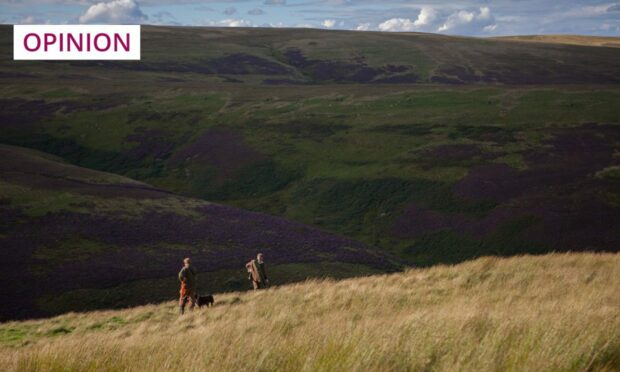Today marks the ultimate highlight in Scotland’s rural calendar – the Glorious Twelfth.
On this day, August 12, the start of the grouse shooting season is celebrated with much fervour and anticipation. This year, land managers and gamekeepers are quietly confident, with brood numbers looking promising.
It is hard not to admire the hills awash with beautiful purple and lilac hues at the moment, and the mosaic of landscapes, with their abundance of varied and diverse wildlife. Yet, these beautiful glens and hillsides are providing much more than a picturesque view.
Across parts of Aberdeenshire, Moray and Angus, the Glorious Twelfth is also a celebration of history, camaraderie, and the unique connection between local people and the land.
The day itself is recognition of the year-round hard work and graft that is poured into the fantastic management of grouse moors, not just for grouse shooting, but also for wider conservation and biodiversity. This simultaneous delivery by gamekeepers, bestowed with the responsibility of managing moorlands, is nothing short of remarkable.

However, all of this is in jeopardy, due to further restrictions, red tape and review. The Wildlife Management and Muirburn (Scotland) Bill currently being debated and discussed in Holyrood will place grouse moor management under threat.
The vital toolkit of land management practices which gamekeepers require to sustain these tremendous landscapes are soon to be licensed, with a regime that is impracticable and overbearing in its sanctions.
Disincentivising grouse moor management could mean severe consequences for the rural economy
At its core, the bill seeks to apply recommendations of the Werritty review, focusing on three key points: grouse moor licensing, muirburn licensing, and further regulation of traps. However, the powers attributed to the licensing regime go significantly beyond the original remit and, when taken out of context of the bill, would be deemed wholly inappropriate.
The bill’s powers have the ability to remove grouse shoot licences, based purely on the investigation of a vexatious allegation. This unfettered power and discretion by government would substantially and unfairly disincentivise grouse moor management, resulting in severe consequences for the rural economy, livelihoods and environment.
Aberdeenshire villages at the heart of grouse shooting country, such as Strathdon, Ballater, Braemar and Fettercairn, could face a difficult future, with the resultant impact being the loss of hotel occupancy, loss of restaurant trade, loss of spending in local shops and even accelerated rural depopulation, without the much-needed income from grouse shooting. No less than 60 to 80% of direct spending on grouse shooting occurs within the local or regional area.
The employment aspect is paramount to the rural economy. The Scottish Government’s own figures show that grouse shooting contributes a higher per hectare employment impact from grouse moors than other comparable rural land uses, such as forestry. In turn, this supports employment in remote areas which otherwise would have very few alternatives.
Muirburn is essential for wildlife
Making muirburn for managing heather is essential for wildlife, as it helps preserve and protect the Scotland’s biggest carbon store in the peat found on grouse moors. The cyclical nature of controlled burning of heather provides the mosaic landscape which creates safe refuges alongside new heather and grass growth, delivering an excellent food source for red grouse, deer and mountain hares.
As we mark the Glorious Twelfth, its wide-reaching benefits must be thoroughly recognised by policymakers
Moorlands are a fantastic habitat for many ground-nesting birds. Lapwing, curlew and golden plover, to name a few, all benefit from gamekeepers exercising habitat management and predator control. Worryingly, muirburn and traps used to effectively carry out predator control are to succumb to licensing, too.
As we mark the Glorious Twelfth, its wide-reaching benefits must be thoroughly recognised by policymakers. BASC is leading the conversation at Holyrood to ensure grouse moor management is not put at stake, and is protected for future generations to come.
Peter Clark is Scotland director for the British Association for Shooting and Conservation (BASC)

